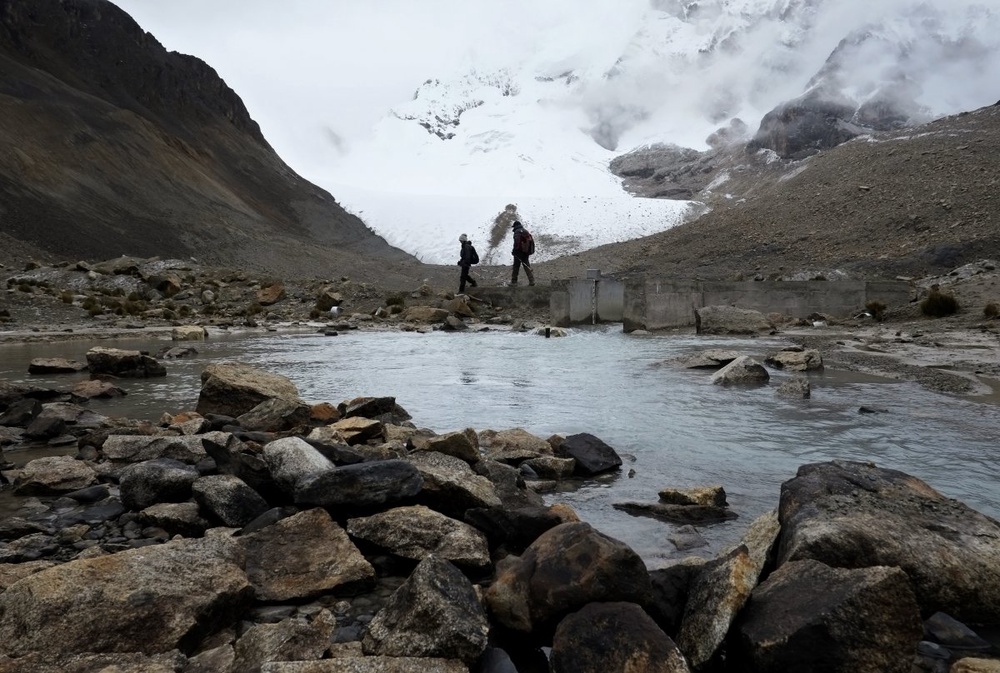
Glacier systems that feed two key rivers in South Asia will badly retreat this century, but demands for water are still likely to be met, AFPr eports citing a study. The health of glaciers in the Himalayas is a closely-watched issue, as they supply vital meltwater to a region facing surging population growth and rising demands for food. Scientists agree that the onward march of the greenhouse effect will shrink the glaciers, but there is little consensus on the volume and rate of ice loss and the impact on water availability. In a fresh attempt at clarity, Dutch scientists led by Walter Immerzeel at Utrecht University carried out a high-tech computer simulation of what could happen to two glacial watersheds -- the Baltoro, which drains into the Indus, and the Langtang, which feeds the Ganges -- in the light of two scenarios for global warming, comprising a modest and a strong rise in temperatures. The two glaciers will shrink badly: by 2100, they will lose roughly half their volume under the higher warming scenario. But, at least as far as this century is concerned, water users will not experience scarcity, in part because the extra meltwater will help meet rising needs. "In both cases, glaciers will retreat but net glacier melt runoff is on a rising limb at least until 2050," according to the paper in Nature Geoscience. "In combination with a positive change in precipitation, water availability this century is not likely to decline. We conclude that river basins that depend on monsoon rains and glacier melt will continue to sustain the increasing water demands expected in this area." Other studies have suggested a reduction in future runoff in the Indus and Ganges basins, but these have looked at the region on a large scale. The new study is a more useful prediction because it deals with regional hydrology in much finer detail, say its authors. They note that 70 percent of the rainfall that feeds the Ganges and Brahmaputra occurs during the monsoon season, which coincides with the main period for glacier melt and and a wet downstream climate. This means a surge of water is available for capture in reservoirs, and can be released to meet later demand downstream, the paper says.





Glacier systems that feed two key rivers in South Asia will badly retreat this century, but demands for water are still likely to be met, AFPr eports citing a study.
The health of glaciers in the Himalayas is a closely-watched issue, as they supply vital meltwater to a region facing surging population growth and rising demands for food.
Scientists agree that the onward march of the greenhouse effect will shrink the glaciers, but there is little consensus on the volume and rate of ice loss and the impact on water availability.
In a fresh attempt at clarity, Dutch scientists led by Walter Immerzeel at Utrecht University carried out a high-tech computer simulation of what could happen to two glacial watersheds -- the Baltoro, which drains into the Indus, and the Langtang, which feeds the Ganges -- in the light of two scenarios for global warming, comprising a modest and a strong rise in temperatures.
The two glaciers will shrink badly: by 2100, they will lose roughly half their volume under the higher warming scenario.
But, at least as far as this century is concerned, water users will not experience scarcity, in part because the extra meltwater will help meet rising needs.
"In both cases, glaciers will retreat but net glacier melt runoff is on a rising limb at least until 2050," according to the paper in Nature Geoscience.
"In combination with a positive change in precipitation, water availability this century is not likely to decline. We conclude that river basins that depend on monsoon rains and glacier melt will continue to sustain the increasing water demands expected in this area."
Other studies have suggested a reduction in future runoff in the Indus and Ganges basins, but these have looked at the region on a large scale.
The new study is a more useful prediction because it deals with regional hydrology in much finer detail, say its authors.
They note that 70 percent of the rainfall that feeds the Ganges and Brahmaputra occurs during the monsoon season, which coincides with the main period for glacier melt and and a wet downstream climate. This means a surge of water is available for capture in reservoirs, and can be released to meet later demand downstream, the paper says.

 +7 (777) 001 44 99
+7 (777) 001 44 99















































